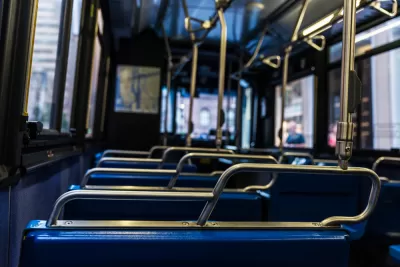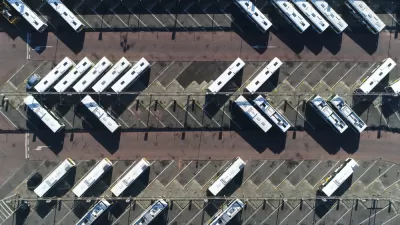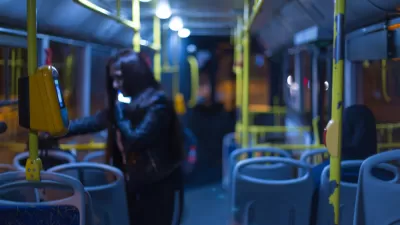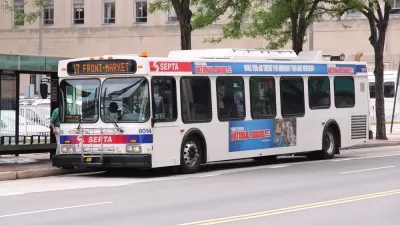U.S. transit systems are still scrambling to find alternate funding sources and adjust their service to new needs as ridership remains below pre-pandemic levels.

“How can you fill a revenue gap when the riders haven’t come back?” As Jared Brey writes in Governing, this is becoming an increasingly urgent question for transit agencies around the country.
For San Francisco’s Bay Area Rapid Transit (BART), the answer may be putting a measure on the ballot asking voters to fund transit more heavily.“BART’s budget is balanced for the 2023-2024 fiscal year, but next year, it’s facing a $140 million deficit,” Brey explains. “Every year after that the system is looking at a deficit of around $300 million.” And while the agency has requested funding from the state, so far, they’ve only seen cuts in Governor Gavin Newsom’s proposed budget.
On the other side of the country, “The Metropolitan Transportation Authority in New York is considering raising subway fares above $3 as part of a suite of measures to plug an estimated $2 billion yearly revenue gap once federal funding runs out. The Massachusetts Bay Transportation Authority (MBTA) is facing gaps of between $286 million and $542 million in fiscal years 2026-2028 and is leaning more on state and local subsidies than it used to; MBTA’s fare recovery ratio dropped from 43 percent before the pandemic to less than 25 percent in the current budget, according to Lisa Battiston, an agency spokesperson.”
Reducing service may seem like an attractive option for cash-strapped agencies, but could in fact be “a feedback loop that makes everyone worse off,” according to Garett Shrode, a policy analyst at the Eno Center for Transportation. “Cutting service to save money would harm those riders and wouldn’t do much for most agencies’ budgets in the long run,” Shrode says. For many transit agencies, the path forward remains unclear.
FULL STORY: City Transit Systems Begin to Peer Over the Fiscal Cliff

Planetizen Federal Action Tracker
A weekly monitor of how Trump’s orders and actions are impacting planners and planning in America.

Restaurant Patios Were a Pandemic Win — Why Were They so Hard to Keep?
Social distancing requirements and changes in travel patterns prompted cities to pilot new uses for street and sidewalk space. Then it got complicated.

Maui's Vacation Rental Debate Turns Ugly
Verbal attacks, misinformation campaigns and fistfights plague a high-stakes debate to convert thousands of vacation rentals into long-term housing.

In California Battle of Housing vs. Environment, Housing Just Won
A new state law significantly limits the power of CEQA, an environmental review law that served as a powerful tool for blocking new development.

Boulder Eliminates Parking Minimums Citywide
Officials estimate the cost of building a single underground parking space at up to $100,000.

Orange County, Florida Adopts Largest US “Sprawl Repair” Code
The ‘Orange Code’ seeks to rectify decades of sprawl-inducing, car-oriented development.
Urban Design for Planners 1: Software Tools
This six-course series explores essential urban design concepts using open source software and equips planners with the tools they need to participate fully in the urban design process.
Planning for Universal Design
Learn the tools for implementing Universal Design in planning regulations.
Heyer Gruel & Associates PA
JM Goldson LLC
Custer County Colorado
City of Camden Redevelopment Agency
City of Astoria
Transportation Research & Education Center (TREC) at Portland State University
Camden Redevelopment Agency
City of Claremont
Municipality of Princeton (NJ)





























